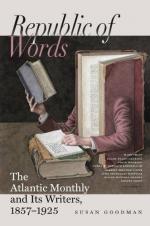After she had departed from the church, the Capuchin stood lost in thought; and to explain his reverie, we must throw some further light on his history.
Il Padre Francesco, as his appearance and manner intimated, was in truth from one of the most distinguished families of Florence. He was one of those whom an ancient writer characterizes as “men of longing desire.” Born with a nature of restless stringency that seemed to doom him never to know repose, excessive in all things, he had made early trial of ambition, of war, and of what the gallants of his time called love,—plunging into all the dissipated excesses of a most dissolute age, and outdoing in luxury and extravagance the foremost of his companions.
The wave of a great religious impulse—which in our times would have been called a revival—swept over the city of Florence, and bore him, with multitudes of others, to listen to the fervid preaching of the Dominican monk, Jerome Savonarola; and amid the crowd that trembled, wept, and beat their breasts under his awful denunciations, he, too, felt within himself a heavenly call,—the death of an old life, and the uprising of a new purpose.
The colder manners and more repressed habits of modern times can give no idea of the wild fervor of a religious revival among a people so passionate and susceptible to impressions as the Italians. It swept society like a spring torrent from the sides of the Apennines, bearing all before it. Houses were sacked with religious fervor by penitent owners, and licentious pictures and statuary and books, and all the thousand temptations and appliances of a luxurious age, were burned in the great public square. Artists convicted of impure and licentious designs threw their palettes and brushes into the expiatory flames, and retired to convents, till called forth by the voice of the preacher, and bid to turn their art into higher channels. Since the days of Saint Francis no such profound religious impulse had agitated the Italian community.
In our times a conversion is signalized by few outward changes, however deep the inner life; but the life of the Middle Ages was profoundly symbolical, and always required the help of material images in its expression.
The gay and dissolute young Lorenzo Sforza took leave of the world with rites of awful solemnity. He made his will and disposed of all his worldly property, and assembling his friends, bade them the farewell of a dying man. Arrayed as for the grave, he was laid in his coffin, and thus carried from his stately dwelling by the brethren of the Misericordia, who, in their ghostly costume, with mournful chants and lighted candles, bore him to the tomb of his ancestors, where the coffin was deposited in the vault, and its occupant passed the awful hours of the night in darkness and solitude. Thence he was carried, the next day, almost in a state of insensibility, to a neighboring convent of the severest order, where, for some weeks, he observed a penitential retreat of silence and prayer, neither seeing nor hearing any living being but his spiritual director.




